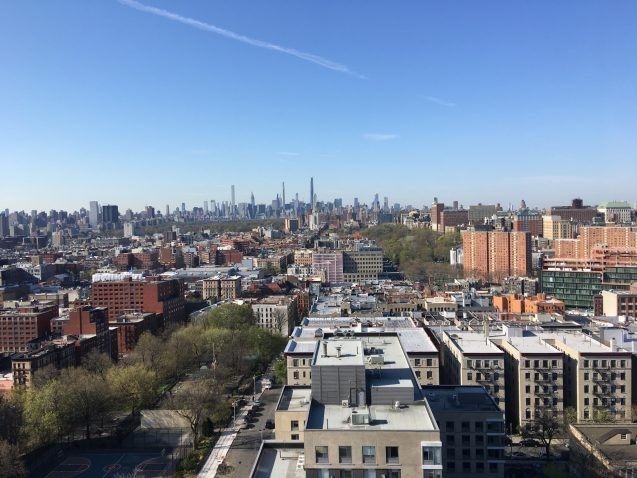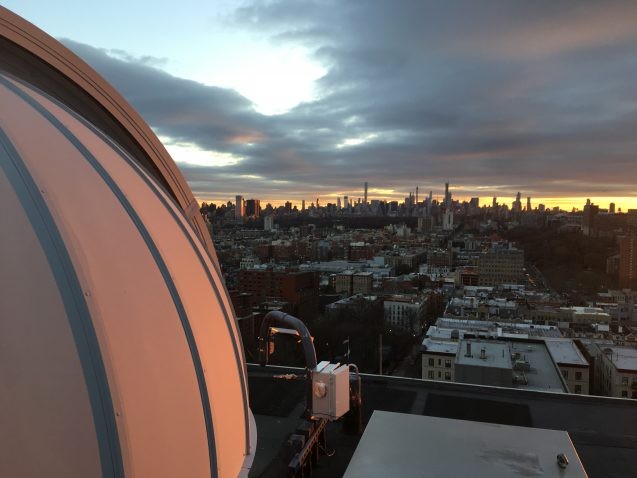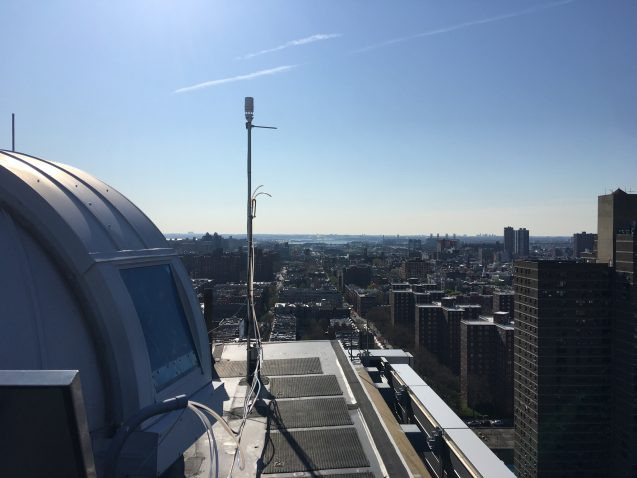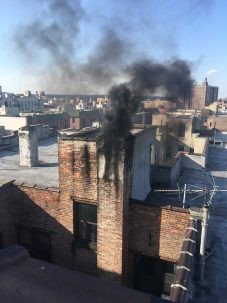Project Takes A New Approach to Gauging New York City’s Emissions
Estimates say the city releases about 50 million tons of carbon a year, but no one has actually measured it. A new project is trying to change that.

In 2017, New York City reportedly emitted nearly 50.7 million tons of carbon dioxide equivalent. However, it’s difficult to know how accurate the estimate is. This kind of greenhouse gas inventory is traditionally estimated from the ground-up by collecting data from a few pollution sources, like buildings and landfills, and using those numbers to make an educated guess about emissions across the whole city. If the calculations are incorrect, or if there are processes that aren’t factored in, the emissions inventory could be wrong.
To give a clearer picture of what’s really happening with New York City’s emissions, Roisin Commane, an atmospheric chemist at Columbia University’s Lamont-Doherty Earth Observatory, is developing a way to measure the city’s greenhouse gas outputs directly. Using an instrument positioned on a tall building in Harlem, Commane is able to gauge local air pollutant levels from the top-down. The site is the start of a planned network that would be the first of its kind in the New York City area, and one of only a handful of similar projects across the United States.

Current estimates of CO2, methane, and carbon monoxide vary widely depending on what method is used to calculate them, Commane explained. “Some seem more realistic than others. But we don’t know which is correct without these ‘top-down’ measurements in the atmosphere, and we won’t know what we are missing.”
Commane and her team first started measuring greenhouse gases in January of 2019 after visiting the rooftop observatory of a building on the City College of New York campus. The observatory was spacious, and its location at 133rd St. and St. Nicholas Avenue meant the instrument was close enough to Midtown to detect pollution levels in air that had traveled over much of the city. “It’s unusual to be able to get a site that can do that,” Commane said. “We can’t exactly put a tower in the middle of New York City, so this is kind of the next best thing.” After testing the site in a pilot project, Commane began taking measurements again in January 2020.
The device has already started to prove its worth, by revealing temporary reductions in air pollution and global warming emissions while the city responds to the COVID-19 pandemic. After the city largely shut down in March, the instrument measured 10 percent drops in carbon dioxide and methane levels, and a 50 percent drop in carbon monoxide compared to the previous spring.
The instrument Commane is using is known as a cavity ring-down spectrometer, and it works by bouncing an infrared laser multiple times through a glass container of air that it sucks in from the surroundings. From that process, the team can find out the concentration of carbon dioxide, carbon monoxide, and methane in the atmosphere.

When the instrument measures a change in atmospheric concentrations, postdoctoral research scientist Luke Schiferl analyzes how much of that change is actually due to an increase or decrease in New York City emissions. Commane explained that the atmospheric concentration is a function of what has been pumped into the air (the emissions), how long that air has stayed in any one place (the influence from weather), and what was in the air before it came into the city (the background).

On a windy day, for example, the measurements of greenhouse gas levels could be lower even if the emissions are the same. And because the measurement site is removed from the sources of emissions, the team must also consider where the air has been. Air quality sites that routinely monitor carbon monoxide throughout New York and New Jersey help the team to establish what was in the air before it arrived in the city. Atmospheric models that include wind speed and direction help Schiferl to determine how much of a greenhouse gas the air could have picked up while traveling over a smokestack or other emissions source.
Within the next year, Commane hopes to establish a network of sites that measure CO2, methane and carbon monoxide around New York City, upper New Jersey, and Connecticut. Her university affiliation would allow her to conduct measurements across state lines in ways that state environmental agencies cannot. “A lot of the transportation and import of goods happens in the Port of New York and New Jersey,” she said. “If we are careful in how we do this, we could get a much better emissions estimate for the larger metropolitan area.”
Improved emissions estimates would enable local governments to track the effectiveness of their emissions reduction plans and set more detailed greenhouse gas targets. Last year, New York City committed to cutting 80 percent of its greenhouse gas emissions by 2050 compared to 2005 levels. The city also pledged to be carbon neutral by 2050, reaching a 100 percent reduction in net greenhouse gas emissions.
“We have all of these policies that we are going to bring in, and we have no idea if they are going to make any difference to our greenhouse gas emissions,” said Commane. “We don’t actually know what the emissions are right now, never mind how we are going to reduce them…. What I would really like is to use this [approach] to tell whether or not the emissions sources we are trying to target are the ones we should be targeting.”
All photos courtesy Ricardo Toledo-Crow at the Next Generation Environmental Sensor Lab, Environmental Sciences Initiative, Advanced Science Research Center, City College of New York.
